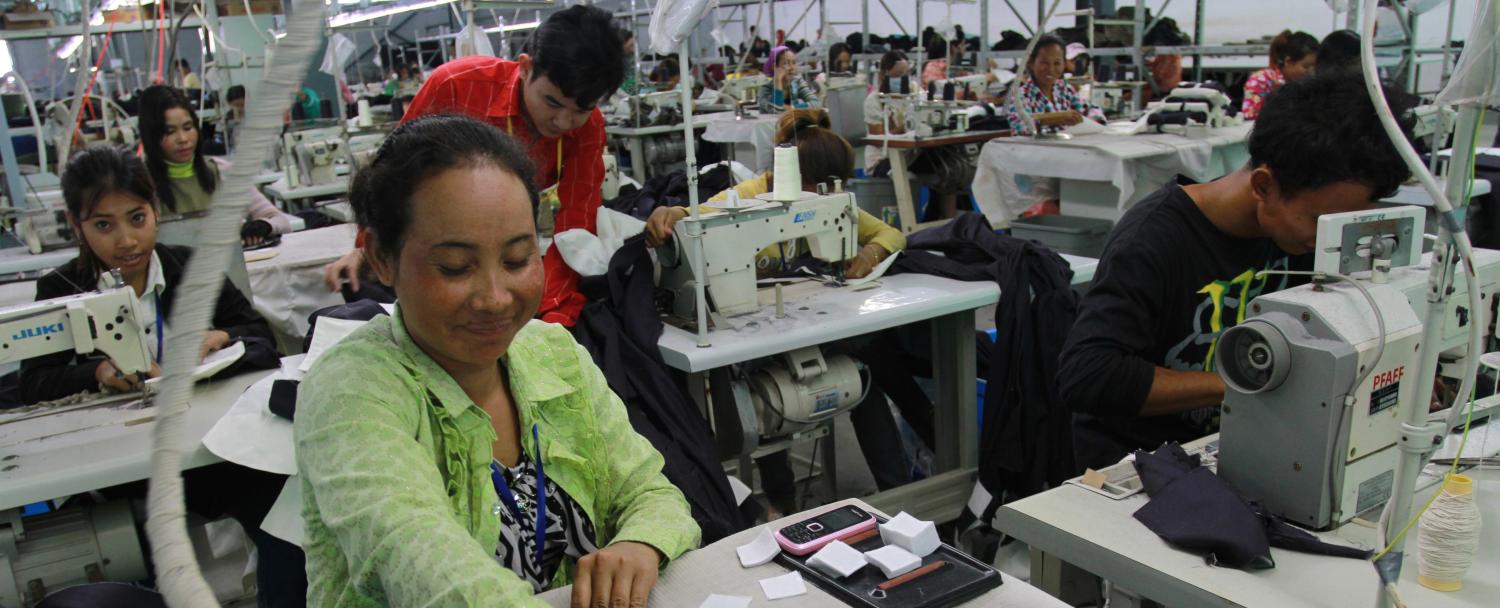This is the fourth post in a series that follows an Expert Workshop in Digitisation, Skills and Migration hosted by the Lowy Institute earlier this month in collaboration with the Department of Immigration and Border Protection. Here is part 1, part 2 and part 3.
In recent years the scope, range and speed of technological innovation and its potential (and actual) impact on labour markets has attracted much attention. In the West, politicians who promise to bring jobs back or protect the jobs of their fellow citizens are pulling in the votes. However, the most urgent need for policymakers to adjust to changing employment conditions is in developing nations, where automation is likely to pose a much greater threat to national prosperity.
There are plenty of examples of emerging technologies that are transforming societies and workplaces.
We can now see 3D printing, also known as additive manufacturing, being deployed everywhere from aerospace to garden sheds. The 'internet of things' (IoT) allows electronic devices to communicate with each other without human intervention. Nanotechnology enables clothing that changes with climate and bandages that heal wounds. It has allowed medical science innovations like a drug ‘ferry’ that doesn’t release its toxic contents until it slips inside cancer cells.
Advances in robotics technology are making human-machine collaboration an everyday reality. Using GPS technology, just like smartphones, robots are beginning to be used in precision agriculture for weed control and harvesting. In Japan, robots are being trialled in nursing roles: they help patients out of bed and support stroke victims in regaining control of their limbs. Some robots have helped make the workplace safer, as some take on jobs that are too dangerous, such as locating radiation sources. A recent example is the clean-up of the stricken Fukushima Dai-ichi nuclear plant where Toshiba has developed a scorpion-shaped robot equipped with multiple live-feed cameras.
Given the right policy environment, firms and workers in developed economies such as Australia are probably well primed to capitalise on the benefits these technologies present.
It’s a less rosy outlook for developing economies.
A 2016 study by the ILO, ‘ASEAN in Transformation’, found robots and automation are fast eliminating low-skilled manufacturing jobs. These are jobs in sectors like textiles, clothing, footwear, and electronics that developing countries use to move up the development ladder. They pull workers from poor paying jobs in agriculture into better paid ones in factories, and then into higher paid ones in the service sector.
The ILO research found 56% of all employment in five ASEAN countries - Cambodia, Indonesia, the Philippines, Thailand and Vietnam – are at a ‘high risk of displacement due to technology in the next decade or two’. In national terms that is 70% of all current jobs in Vietnam. In some occupations and in some countries, the study identified ‘extreme risks’ of automation. One example is Cambodia, where 54% of the country’s wage employees are concentrated in just three sectors: garment production, agriculture and construction. All three are highly susceptible to technological substitution.
Less dramatic but also telling is the fate of the business-process outsourcing sector in the Philippines, itself a product of technology developments of the 1990s that enabled business to outsource call centre work. Now almost eight in every nine jobs in this sector are at a high risk of automation. That’s one million jobs and equates to 7% of GDP in the Philippines.
In agriculture one example of disruption is the emergence of technology that could displace the manual labour of peeling shrimp. The migrant workers who do this work, mostly women, are still cheap enough that massive displacement isn’t expected soon, but the technology is available.
Previous eras of technological innovation largely brought positive disruption; creating new sectors, making firms and workers more productive, extending opportunities. During the industrial revolution, for example, new manufacturing technologies mainly benefited low-skilled workers by simplifying the tasks workers had to perform. Technological progress did not induce a long-term rise in unemployment as production increased drastically, allowing prices to fall and consumers to buy more goods, thus creating job growth in many sectors of the economy.
Technology still induces both disappearance and appearance of new occupations. It’s not a zero-sum game. But what is happening today is the disappearance of low skilled jobs in manufacturing developing economies, and medium skilled ones in developed economies. This is new.
The well-trodden path to economic success, the mass employment manufacturing model that enabled hundreds of millions of workers in post-war Japan, Korea and, more recently and most spectacularly China, to move from farm to factory and then from factory into higher value services jobs, may no longer be an option.
Migration is an additional element to this story. Millions of migrants are employed across Asia in mostly low skilled jobs. Coming technologies suggests demand for their services will at some point diminish. Where will they go then?
High unemployment among young people can lead to despair, hopelessness and disconnection from society and sometimes radical choices, such as crime or the allure of radical terrorist groups. Conflicts around the world are caused by a variety of factors. But there is no doubt when economic opportunities for a decent job and hope for the future are on offer, the risk of conflict is diminished.
Governments are doing their best to grapple with the challenges brought by technology-enabled disruption.The difference today is that innovation is so much quicker in terms of application. Policy-makers simply do not have the time they once did.
